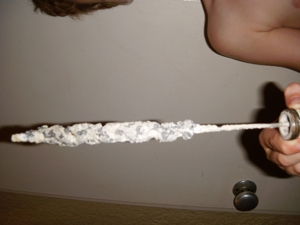Due to my impending need to move my RV I decided to winterize it right now. My kids hockey has started anyhow so the chances of actually using the RV again this year are slim ( : sigh canada)
sigh canada)
Anyhow, I removed the hot water heater plug and took a pressure shower while doing so. Instructions for winterizing should include the point do not stand directly in front of plug when removing :-[
The anode rod has a real thick buildup of minerals or whatever around it 1/2 inch diameter in total. Should I scrape it off? Leave it alone, or replace?
Anyhow, I removed the hot water heater plug and took a pressure shower while doing so. Instructions for winterizing should include the point do not stand directly in front of plug when removing :-[
The anode rod has a real thick buildup of minerals or whatever around it 1/2 inch diameter in total. Should I scrape it off? Leave it alone, or replace?

